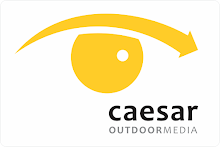Digital out-of-home refers to dynamic media distributed across placed-based networks in venues including but not limited to cafes, bars, restaurants, health clubs, colleges, arenas and public spaces. DOOH networks typically feature independently addressable screens, kiosks, jukeboxes and/or jumbotrons. DOOH media benefits location owners and advertisers alike in being able to engage customers and/or audiences and extend the reach and effectiveness of marketing messages. It is also referred to as Digital Signage.
DOOH also includes stand-alone screens, kiosks, and interactive media found in public places. The availability of inexpensive LCD screens with built-in media players has opened the door for companies to add interactive video messages in Point of Purchase (POP) Displays. The displays allow consumers to get additional information at the moment of decision on a product or service. Growth in the DOOH industry has been increasing in 2009, with more POP manufacturers, advertisers, and content developers moving to digital.
Non-Digital Out Of Home
Non-Digital out-of-home refers to other types of media distributed across physical spaces. These are:citation needed
Bulletin - Bulletin billboards are usually located in highly visible, heavy traffic areas such as expressways, primary arteries, and major intersections. With extended periods of high visibility, billboard advertisements provide advertisers with significant impact on commuters.
Bus Advertising - Firmly establish brand awareness and generate quick recall with high profile exposure near point of purchase locations. See also [6]
Commuter Rail Display - Reaches a captive audience of upscale suburban commuters. Additionally, reaches lunch-time patrons, shoppers and business professionals.
Mobile Billboard - Mobile billboards offer a great degree of flexibility to advertisers. These advertisements can target specific routes, venue or events, or can be used to achieve market saturation.
Poster - Target local audiences with these billboards, which are highly visible to vehicular traffic and are ideal for the introduction of new products/services. Maximize advertising objectives and brand awareness by placing multiple units in strategic locations while lowering cost per thousand impressions.
Premier Panel - Premiere panels combine the frequency and reach of a poster campaign with the creative impact of a bulletin.
Premier Square - Bright top and bottom illumination on a premiere panel provide extra impact after dark.
Taxi Advertising - Taxi advertising allows advertisers to highlight their products, whether brand awareness, or a targeted message, directly to areas where people work, shop, and play.
Wallscape - Wallscapes are attached to buildings and are able to accommodate a wide variety of unusual shapes and sizes. These billboard advertisements are visible from a distance and provide tremendous impact in major metro areas.
Other types of non-digital out-of-home advertising include airport displays; transit and bus-shelter displays; headrest displays; double-sided panels; junior posters; and mall displays.
Selling billboard advertising space
If a private property owner wants to sell advertising space to one of the outdoor advertising companies ('media sellers') he or she directly approaches the company. A media seller may also approach the owner of an interesting property and make a bid. If an agreement is signed, the media seller erects a structure for displaying the ads and rents out the space to the clients. The world's largest media sellers are CBS Outdoor, JCDecaux, Clear Channel Outdoor, and Lamar Advertising.
Digital out-of-home refers to dynamic media distributed across placed-based networks in venues including but not limited to cafes, bars, restaurants, health clubs, colleges, arenas and public spaces. DOOH networks typically feature independently addressable screens, kiosks, jukeboxes and/or jumbotrons. DOOH media benefits location owners and advertisers alike in being able to engage customers and/or audiences and extend the reach and effectiveness of marketing messages. It is also referred to as Digital Signage.
















0 komentar:
Posting Komentar